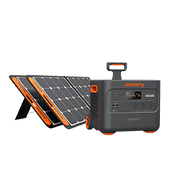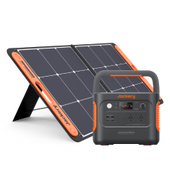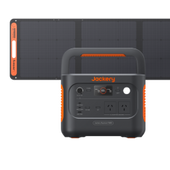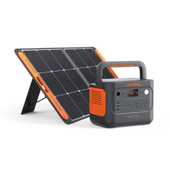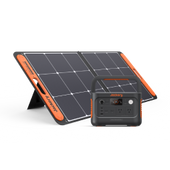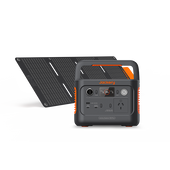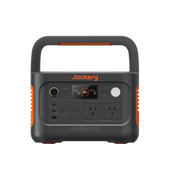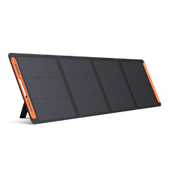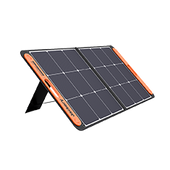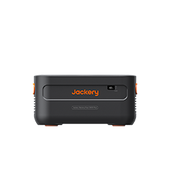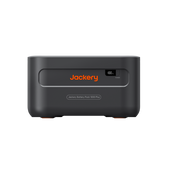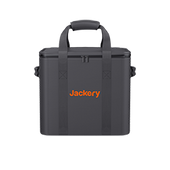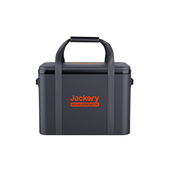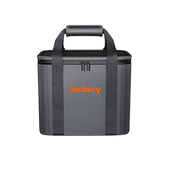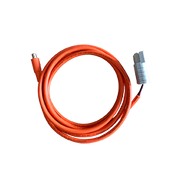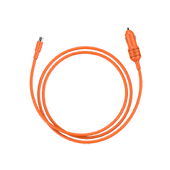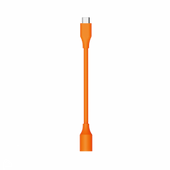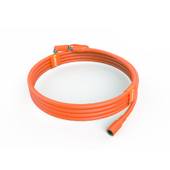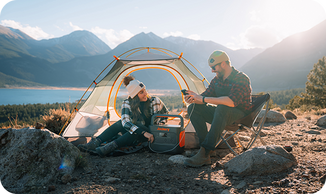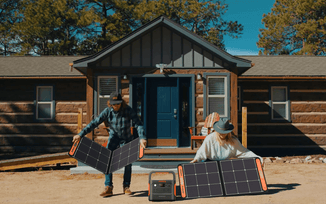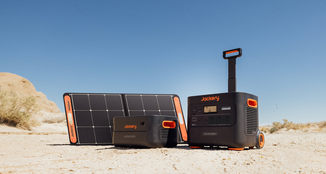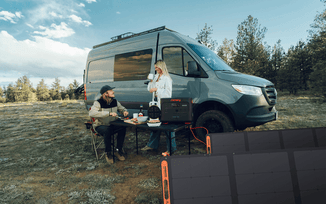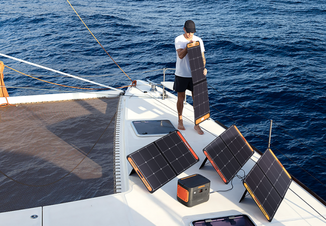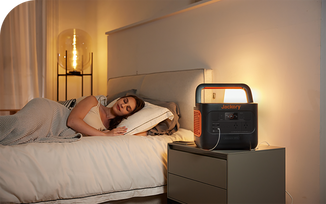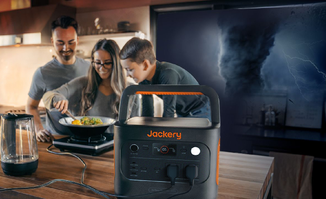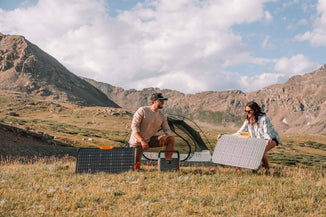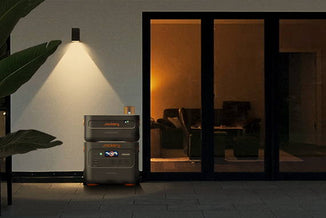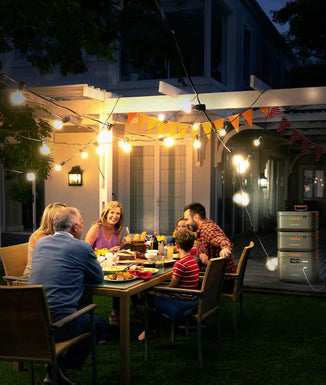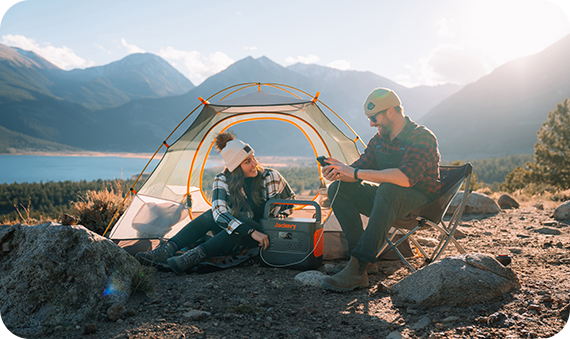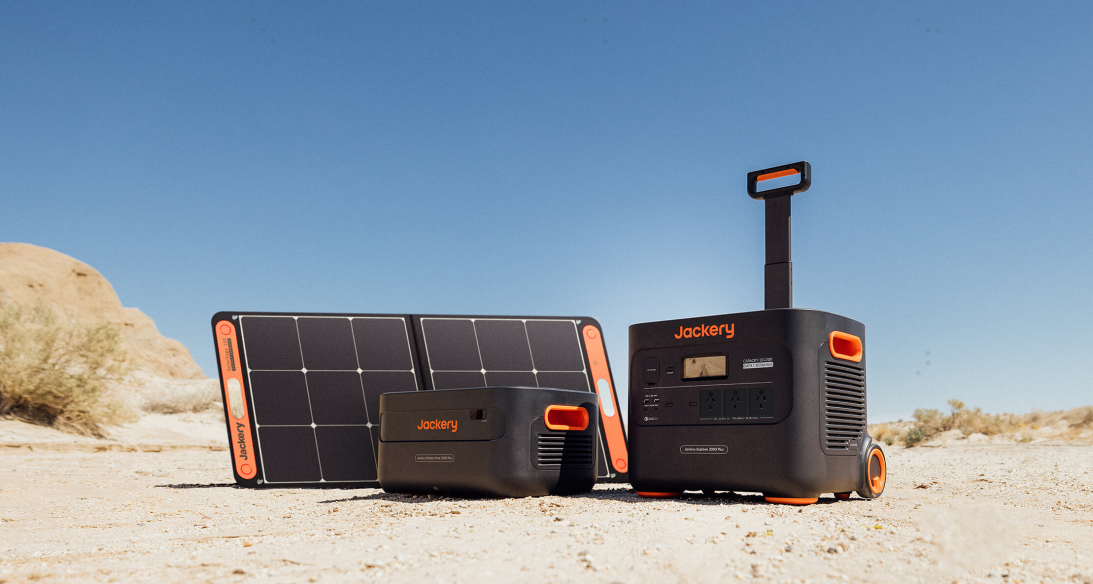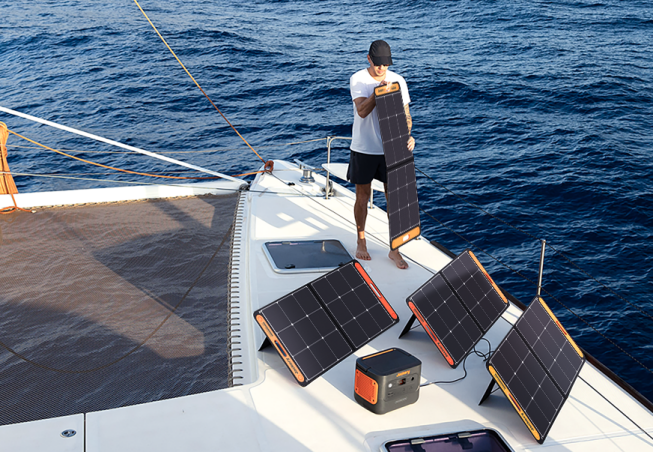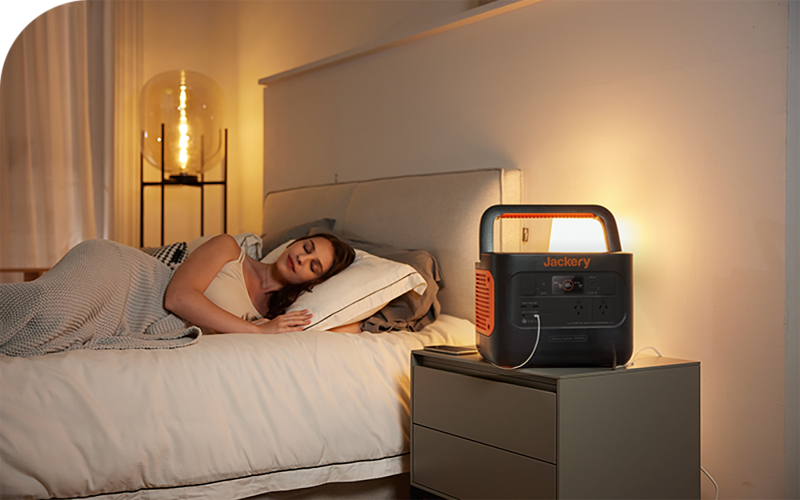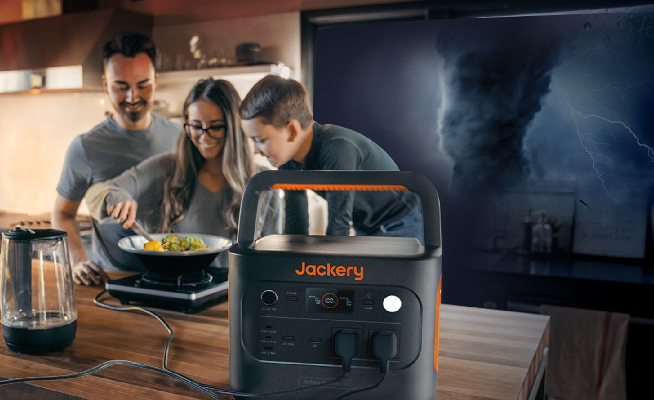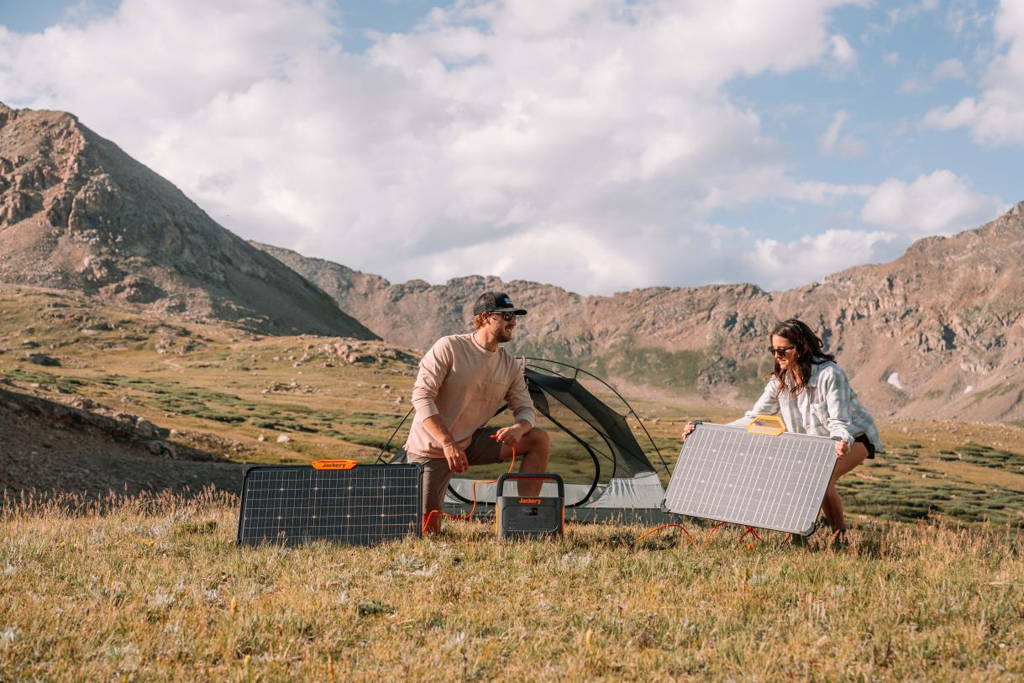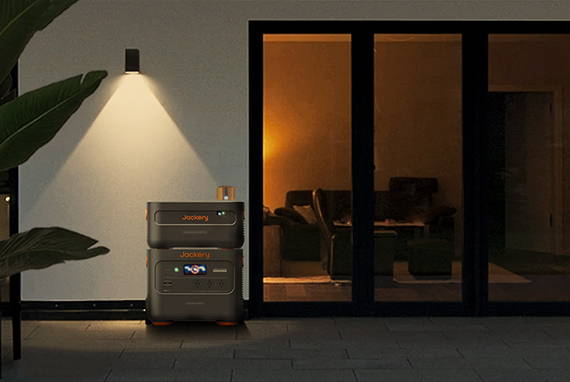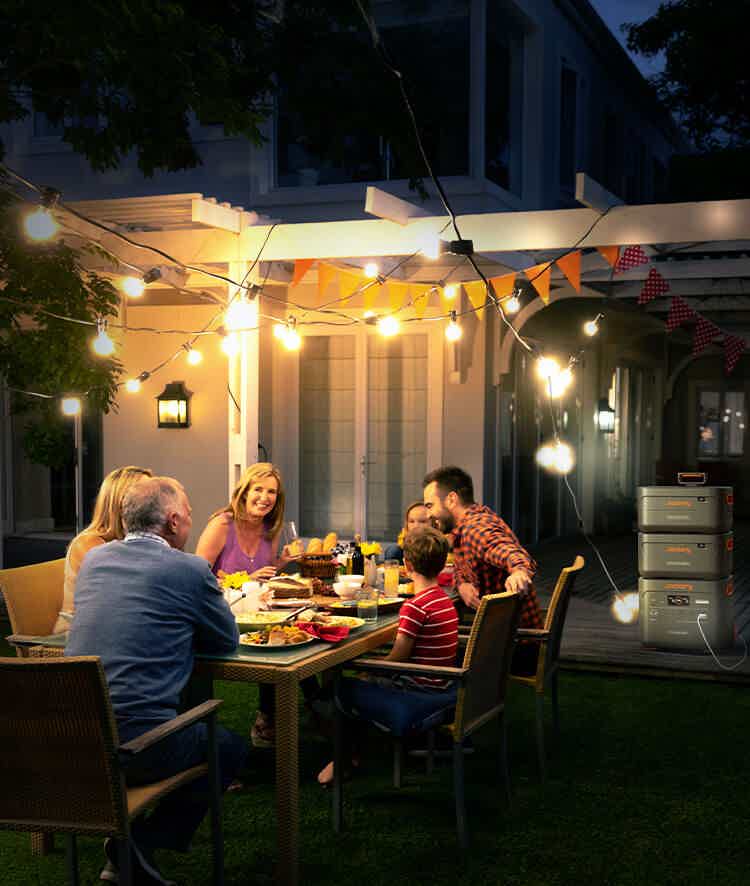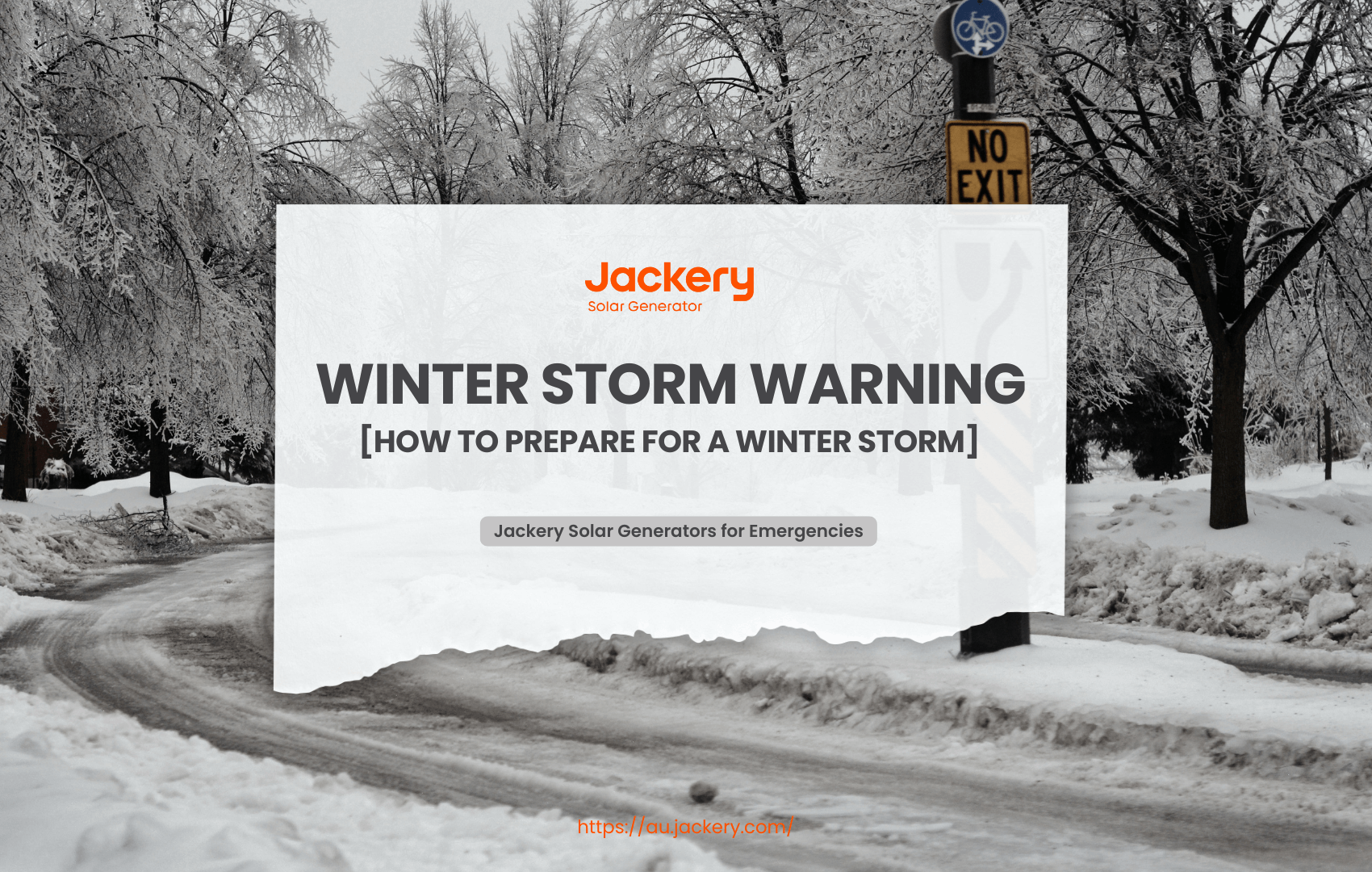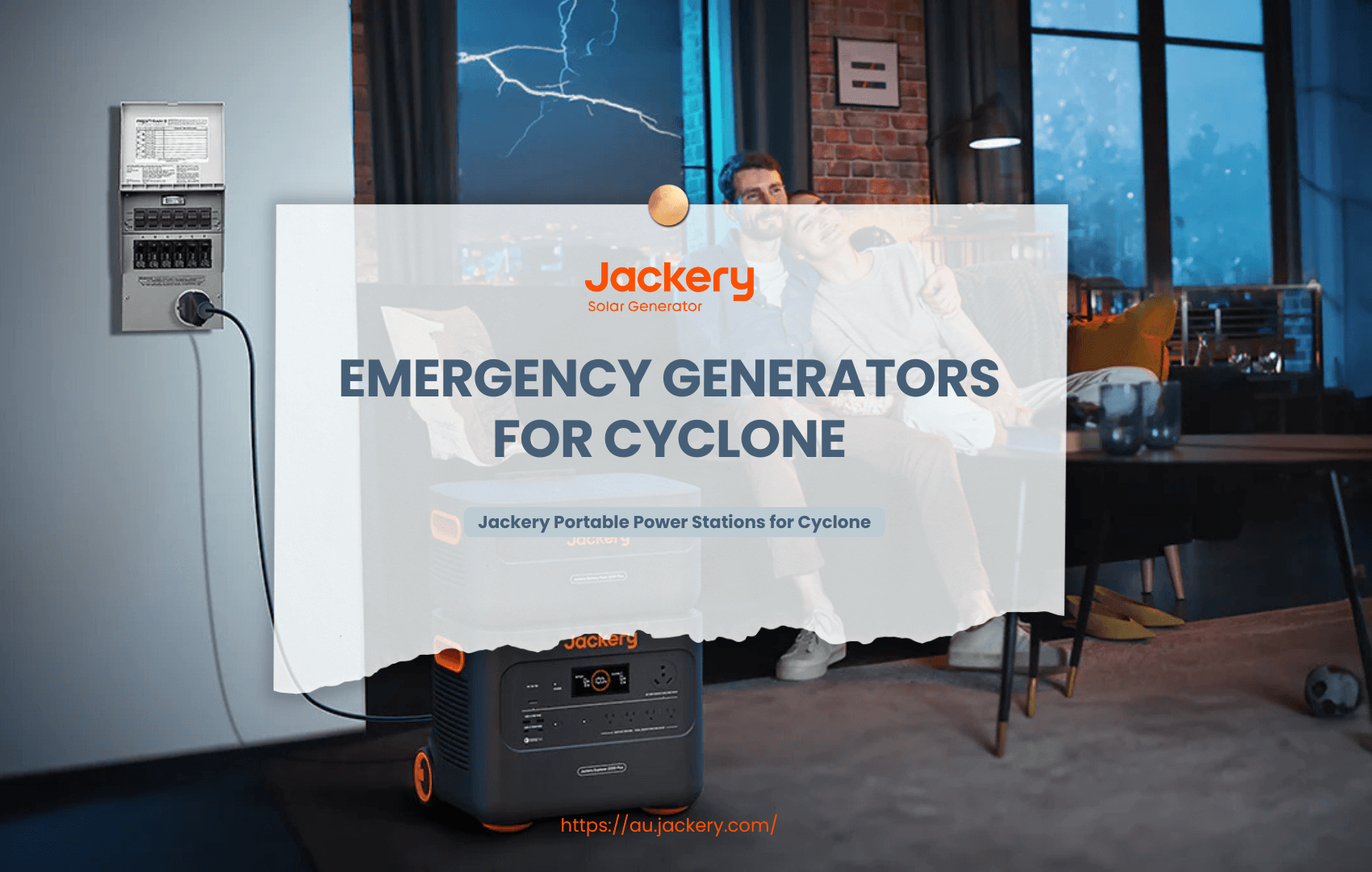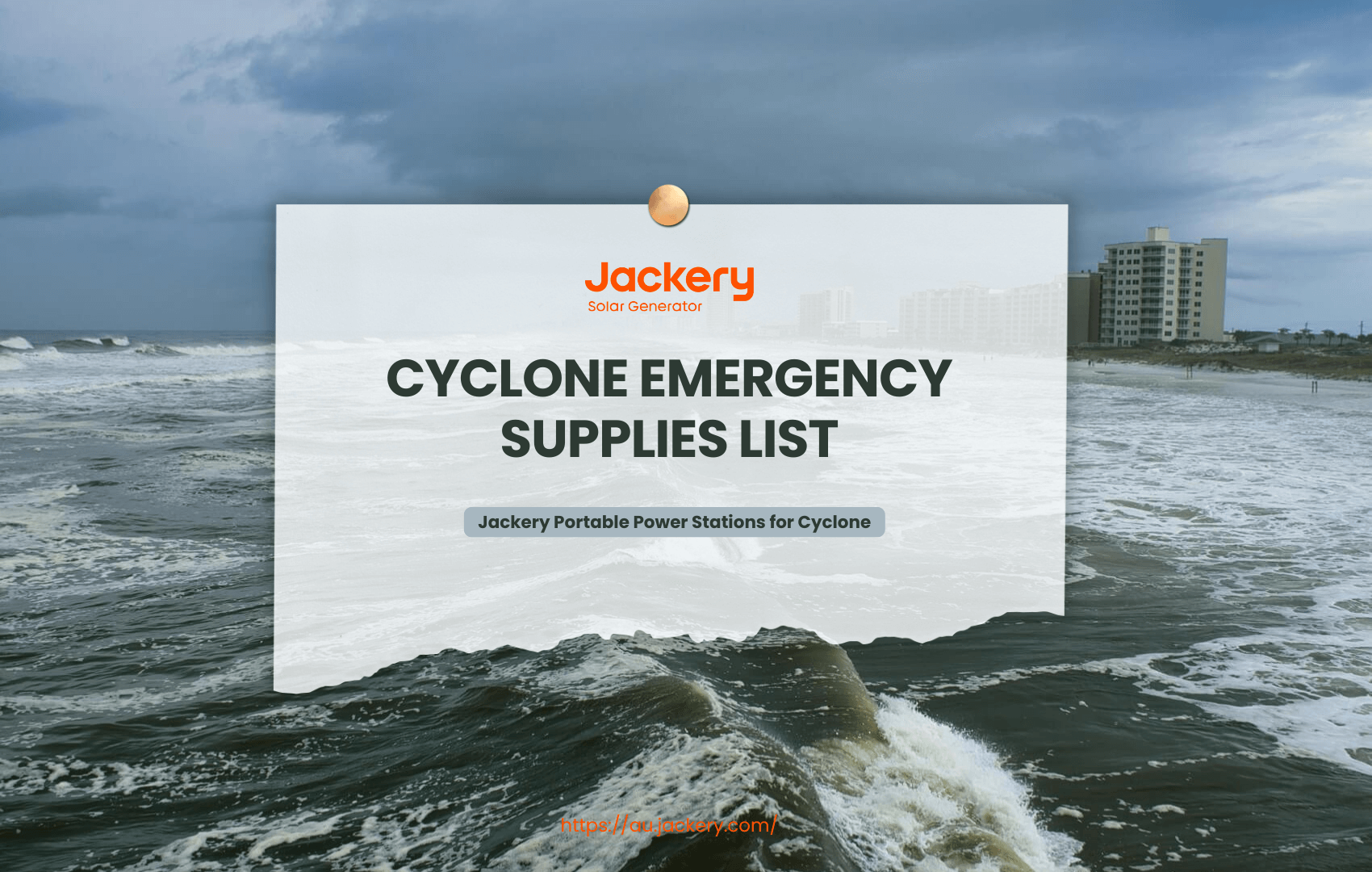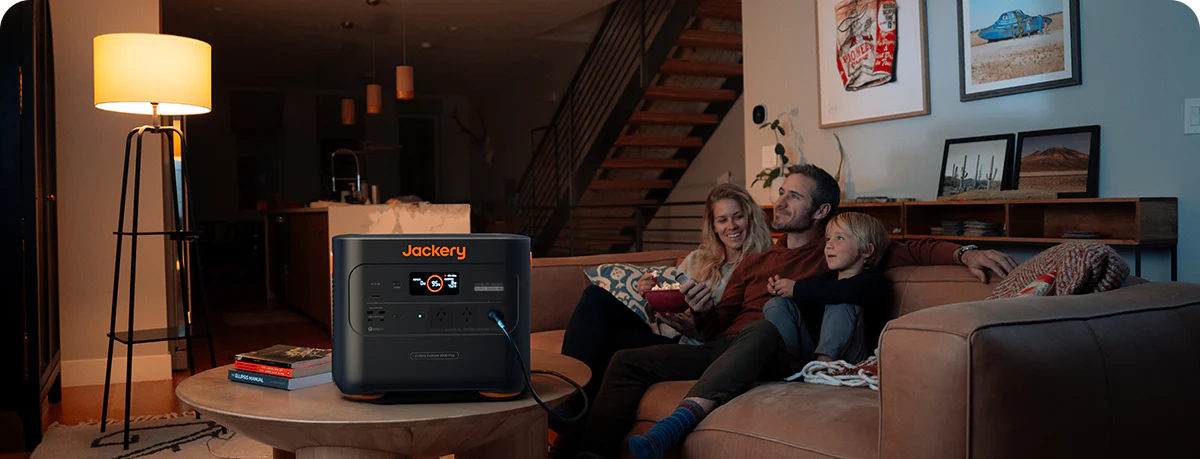|
Key Takeaways: |
|
- Winter storms are usually accompanied by strong winds and below-freezing temperatures, which can be dangerous. - Winter storms vary in severity in how they affect human life because they last for different periods. - Being prepared is more than a precaution; it's necessary for conquering winter storms. - We recommend Jackery Solar Generator 2000 Plus and 1000 Plus to charge appliances during a power outage caused by winter storms or to save on winter electricity bills. |
The Overview of Winter Storm
A winter storm is a weather phenomenon characterised by precipitation, primarily snow, sleet, or freezing rain. It is usually accompanied by strong winds and below-freezing temperatures, making it very dangerous. Therefore, it is too risky for people to go out and be exposed to cold air during their daily activities. But how do winter storms form?
How Do Winter Storms Form?
There are three critical elements required for a winter storm to form. The first is cold air, as the air temperature below freezing near the ground and below the clouds causes precipitation to form snow and ice. The second is lift, which lifts moist air to form clouds and cause precipitation. The last element is moisture, such as air that blows over a large lake or ocean and picks up water vapour, which is necessary for clouds and precipitation to form.
Types of Winter Storms
Snowstorms are a type of winter storm, while blizzards are snowstorms with solid winds. Ice blizzards bring freezing rain or sleet in addition to snow.
Snowstorms
Blizzards where precipitation falls in the form of snow are called snowstorms. In winter, most precipitation occurs in the form of snow in clouds, as the temperature at the top of a snowstorm is low enough to form snowflakes.
Blizzards
Snow showers are called blizzards if strong winds and heavy snow accumulation accompany them. Blizzards have winds of 56 km/h (35 mph) or more, which can cause blowing snow. The wind picks up snow on the ground, reducing visibility and snow drifting.
Ice Storms
Ice storms occur when ice is at least 6.35 mm (0.25 in) thick on all outdoor surfaces. The ice layer on the ground makes human activities dangerous.

What Is Winter Storm Warning
Winter storms vary in severity in how they affect human life because they last for different periods. They can bring extreme cold, freezing rain, sleet, heavy snow, ice, and strong winds that can disrupt transportation, heating, electricity, and communications.
The news often reports frost, blizzards, and freezing rain, and knowing the difference can help prepare you in case you need to go out.
When a blizzard begins, the National Weather Service will issue warnings based on local weather standards. When you listen to the warnings, remember that the actual situation is usually worse than the warnings.
In addition to winter storm and blizzard warnings, the National Weather Service also issues warnings you may need help understanding because they rarely appear. The following table outlines the differences between the various winter storm warnings.
|
Winter Storm Warning |
|
|
Winter Storm Warning |
A winter storm warning indicates severe, life-threatening winter weather has begun or will begin within the next 24 hours. |
|
Blizzard Warning |
A blizzard warning typically indicates sustained or frequent gusts of wind at or above 35 mph, combined with heavy snowfall or blowing snow, and is expected to last three hours or more. |
|
Winter Storm Outlook |
A winter storm outlook indicates a winter storm is likely within the next two to five days. So stay tuned to your local weather bureau for the latest updates. |
|
Winter Storm Watch |
A winter storm watch is issued when brutal winter weather with heavy snow or ice accumulation is likely within 36 to 48 hours. |
|
Frost/Freeze Warning |
Temperatures are expected to drop below freezing, which may harm plants, crops, and fruit trees. |
|
Blowing/Driving Snow |
This warning indicates that strong winds will blow snow that has already fallen and may affect visibility. |
|
Winter Weather Advisory |
Winter weather advisory means that weather conditions such as snow, sleet, ice or freezing rain are expected to cause significant inconvenience and lead to dangerous sidewalks and roads. However, if you are careful, it will not endanger life. |
|
Wind Chill Temperature |
The wind chill is how cold it feels when it hits the exposed skin of people and animals, based on the air temperature and wind speed. As winds pick up, heat is carried away from the body faster, causing the body temperature to drop. |
How to Prepare for a Winter Storm?
Australians are no strangers to the forces of nature. From severe thunderstorms to hurricanes, storm season showcases a variety of natural forces and potential dangers. Being prepared is more than a precaution; it's a necessity. You can do simple things to protect your home, car, and family.

Tip 1: Monitor Weather Warnings
Use reliable sources such as the Bureau of Meteorology or weather apps to stay informed of weather forecasts, including severe weather warnings from the Bureau of Meteorology, threatened areas, and predicted dangers. Also, learn about your area's warning levels and evacuation procedures. If there is an evacuation order, follow it immediately to ensure safety.
Tip 2: Prepare an Emergency Action Plan
Create a comprehensive emergency action plan and ensure everyone knows your evacuation plan. Things to include in your family emergency plan:
What should each family member do in an emergency?
Make a list of emergency contact numbers, such as local hospitals, gas, and electricity.
Prepare a family emergency kit and make sure everyone knows its location.
If you have to evacuate, where is the nearest evacuation centre?
How will family members contact each other if they become separated?
Tip 3: Pack Home Emergency Kit
Before a winter storm, prepare food, water, and medicine to keep you and your family alive. Stores may be closed, and it may be unsafe to go outside. So, what should be in a home emergency kit?
|
Home Emergency Kit Checklist |
||
|
Warm clothing |
Dry food |
Cash |
|
Blanket |
Canned food |
Radio |
|
Sleeping bag |
Can opener |
Spare batteries |
|
Toiletries |
Drinking water |
Charger |
|
Common medications |
Waterproof matches |
Backup power supply |
|
Passport or ID |
Candles |
First aid kit |
|
Important documents |
Flashlight |
Emergency contact number |
A solar generator is essential during a winter storm because it provides a reliable backup power source when the main power grids go down. This allows you to keep important appliances like heaters, lights, and medical equipment running, keeping you safe and comfortable during extended power outages caused by bad weather.
Here, we recommend Jackery Solar Generators, which combine Jackery Solar Panels with Portable Power Stations to convert sunlight into electricity. When it's sunny, you can put the panels under the ground to store energy in the power station. On rainy or cloudy days, you can use the restored electricity to power appliances or refuel your power station with wall outlets or carports.

Tips for a home emergency kit
Of course, preparing a comprehensive home emergency kit and storing and updating it is necessary.
• Please store the home emergency kit in an easily accessible and dry place.
• Make sure the family knows where the home emergency kit is stored.
• Check and update the contents of the home emergency kit at least once a year.
• Make sure your backup power supply is fully charged.
Tip 4: Ensure Personal and Property Safety
Storms are the most common natural disasters in Australia. Hard storms and heavy rains can cause severe damage to human homes and even harm humans. So you can take the following measures to protect your personal and property safety and reduce the damage caused by storms:
Trim Trees and Branches: Overwhelming tree branches can be dangerous during windy weather. Clear trees, branches, and other foliage around your home to prevent them from falling on your roof or car or clogging your gutters.
Secure Loose Items Outdoors: Strong winds from severe thunderstorms can turn loose objects around your home into dangerous projectiles that damage your home, power lines, and surrounding property. Take the time to remove or secure loose items on your back porch or yard, including outdoor furniture, trampolines, and building materials.
Clear Gutters: Clogs can cause rainwater to overflow and cause roof leaks or damage, or worse, seep into your home, damaging your belongings and causing mould. Inspect and clean gutters, downspouts, and drain pipes regularly.
Inspect and Repair Roofs: Ensure your roof is in good condition to prevent leaks and damage from heavy rain. Inspect your roof at least once yearly for broken shingles/cracked panels and signs of moisture (mould, dirt, algae). Roof repairs are technically challenging and physically dangerous, so they are best left to a professional roofer.
Tip 5: Stay Warm
Before a winter storm hits, staying warm to protect yourself from the cold is essential. Keeping your home warm is especially important to prevent frostbite and hypothermia. So prepare your home with insulation, caulking, and weather stripping to make sure it is safe to heat.
Tip 6: Learn Emergency Skills
It's crucial to learn emergency skills ahead of time that can save lives in the blink of an eye. For example, in the following emergencies:
Learn first aid and cardiopulmonary resuscitation (CPR).
Learn how to treat frostbite and hypothermia.
Be prepared to live without electricity, gas, or water.
Learn how to prevent pipes from freezing.
Jackery Solar Generators for Emergencies
Being prepared is essential to remaining safe and comfortable during winter storms, which can bring strong winds, snow, and power outages. Jackery Solar Generators offer a reliable backup energy supply for electric warmers, space heaters, portable ACs, lights, and more.
A solar generator can keep your home from getting too cold by running heaters, which is especially important for weak people. You can also use a solar generator to keep fridges and freezers running, keeping food from going bad. For people who depend on medical equipment, a solar generator can make sure it keeps working even when the power goes out.
Jackery Solar Generators are built to last through severe winter conditions and can safely work from 14°F to 113°F. They give you peace of mind no matter where you are by giving you steady power. Even if used daily, Jackery's Plus series can last up to 4000+ hours, a long time.
Jackery Solar Generator 2000 Plus
The Jackery Solar Generator 2000 Plus sets a new benchmark in portable power solutions, offering unparalleled performance, safety, and durability. With a 2 to 12 kWh expandable capacity, it can quickly charge mini to large household appliances in a power outage caused by winter storms. This solar generator is designed for longevity and reliability and is built with a LiFePO4 battery that boasts a 10-year lifespan and 4,000 charging cycles. Why this generator is suitable for winter storms:

- Expandable Power for Multiple Appliances: The Jackery Solar Generator 2000 Plus accommodates additional battery packs, enhancing its capacity from 2 kWh to an impressive 12 kWh, making it ideal for preparing emergencies.
- Ultra-Long Standby: The 2000 Plus features an extended standby mode that maintains a 50% charge for up to 2 years. Feel assured that your appliances are connected to our 2000 Plus! With a 20ms EPS, essential devices such as your refrigerator and CPAP remain operational instantaneously during winter power outages.
- Never Worry about Losing Power: The Solar Generator 2000 Plus requires only 2.5 hours for a complete sun charge when utilising six SolarSaga 200W solar panels. By using solar energy for charging, the power source achieves complete autonomy, eliminating reliance on the power grid.
|
Jackery Solar Generator 2000 Plus Working Hours (2-12 kWh) |
|
|
Refrigerator (500W) |
3.3-20.4H |
|
Portable Air Conditioner (1150W) |
1.4-8.9H |
|
Kettle (850W) |
1.9-12H |
|
Space Heater (1000W) |
1.6-10.2H |
|
Electric Blanket (200W) |
8.2-51H |
Jackery Solar Generator 1000 Plus
The Jackery Solar Generator 1000 Plus is a step above the rest regarding portable power. Featuring a robust 1264Wh capacity and 2000W output, it powers 99% of devices, from your kettle to essential medical equipment. Its whisper-quiet operation and emission-free technology make it the ideal choice for eco-conscious users. Why the Solar Generator 1000 Plus is suitable for winter storms:

- Expandable Capacity for Charging Several Appliances: Up to 5 power levels (5 kWh) can be added, giving you 3 days of backup power in case of an emergency. The Jackery 1000 Plus is the best choice for a portable power station because it can be used outside, at home, or in an emergency.
- Multiple Recharging Methods: Our improved technology lets you charge more efficiently than ever. You can quickly charge your gadgets and use them for longer. For example, you can use a SolarSaga 200W to recharge 1000 Plus, which takes SolarSaga 200W to recharge 1000 Plus takes 9 hours, a SolarSaga 100W takes 18 hours, and wall charging only for 1.7 hours. No matter where you go, stay charged and linked. Charges that are reliable and work well, customised to your needs.
- All-Around Safety: Safety is at the heart of the 1000 Plus. Its LiFePO4 batteries offer superior durability, lasting up to 10 years with 4,000 charge cycles, while ChargeShield Technology ensures maximum protection for both the generator and your devices.
|
Jackery Solar Generator 1000 Plus Working Hours (1.25-5 kWh) |
|
|
Refrigerator (500W) |
2.1-8.5H |
|
Portable Air Conditioner (1150W) |
0.9-3.7H |
|
Kettle (850W) |
1.2-5H |
|
Space Heater (1000W) |
1.1-4.25H |
|
Electric Blanket (200W) |
5.3-21.25H |
What Should You Do During a Winter Storm?
When a winter storm approaches, stay indoors and be alert for hazards. If lightning or a power outage occurs, carefully turn off and unplug appliances. If flooding is expected, move appliances to higher ground in the house.
Safety Measures During Winter Storms
Taking measures to ensure personal safety during winter storms is critical.
Be careful when using heaters and fireplaces to prevent fires.
If you feel sick, dizzy, or weak, breathe fresh air immediately.
Cover your nose, ears, cheeks, chin, fingers, and toes with warm, dry clothing to prevent frostbite.
Drink plenty of warm water, but avoid caffeine and alcohol.
What To Do If You Have Frostbite or Hypothermia
If you find signs of frostbite or hypothermia, act quickly to get treatment.
Frostbite: Frostbite is when a part of the body freezes. Usually, the nose, ears, cheeks, chin, fingers, and toes are the first to be affected. People typically experience pain and numbness from frostbite.
Frostbite is treated by moving to a warm place and gently soaking the affected area with warm (not hot) water until the skin returns to normal and feels warm. If frostbite is severe, seek emergency medical care.
Hypothermia: Hypothermia can sometimes be fatal. Older people, infants, children, and people with certain medical conditions are more susceptible to its symptoms. It is treated by moving to a warm place, removing wet clothing, and slowly warming the body. If symptoms of hypothermia are severe, seek emergency medical care immediately.

How Can You Stay Safe After a Winter Storm?
Learn and implement steps to ensure your family's physical safety and mental health after a winter storm.
Safety Measures
To get back to everyday life and get through this difficult time, take note of the following:
After a winter storm, check your home and property for damage.
Stay away from damaged or downed power lines.
Watch out for fallen branches, trees, and ice.
Stay away from damaged gas lines.
Never use damaged electrical outlets.
Emotional Recovery
Bad weather can have severe mental health effects and is expected to cause many negative feelings. So, once you're physically safe, take the time to make sure your family is emotionally healthy. Healthy food and plenty of sleep can help people cope with stress.
Financial Recovery Measures
If you experienced storm damage, take photos, as they may be needed for an insurance claim. Avoid doing repairs alone, as this could cause further damage and may not be covered by your insurance. If you need additional support after a disaster, look for free and low-cost services in your local community.
Tips for Driving and Getting Stranded During a Winter Storm
Travelling during a winter storm is not recommended and can be dangerous. Being stuck in a car during a snowstorm can be a terrifying experience. But if you have to go out, there are steps you can take to prevent and respond to dangerous situations while driving or being stuck.

Tips for Driving During a Winter Storm
Try not to drive during a winter storm. If you must drive during a winter storm, follow these tips:
Keep your vehicle's gas tank full and prevent the fuel lines from freezing.
Make sure everyone wears their seatbelts and pays attention to the road.
Never follow too closely, as stopping suddenly on snowy roads can be difficult.
Before you leave, check the weather forecast for all areas you will pass through.
Avoid driving in sleet, freezing rain, freezing drizzle, and dense fog.
Try to plan your trip during daylight hours and let someone know your destination, route, and estimated arrival time.
Bring the following items with you when driving during a winter storm:
|
Winter Storm Driving Checklist |
|
|
Blankets or sleeping bags |
Backup power |
|
Warm clothing |
A set of tyre chains |
|
Rain gear |
Traction mats |
|
Plastic bags for hygiene |
A windshield scraper |
|
Canned food |
A small broom |
|
High-energy snacks |
A small bag of sand to create traction under the wheels |
Tips for Getting Stranded During a Winter Storm
If you are stranded while driving during a winter storm, stay in your vehicle and wait for help. Do not leave your car to call for help unless you can see help within 100 yards (91 meters). You can quickly become disoriented in the snow.
In addition, you need to pay attention to the following aspects:
Start the engine for about 10 minutes every hour (or 5 minutes every half hour) to stay warm.
Keep the dome light on when the engine runs so others can see you.
To prevent carbon monoxide poisoning, open the downwind window slightly for ventilation.
Do light exercise to keep your blood circulating, such as moving your arms and legs.
Drink as much water as possible to avoid dehydration, which can lead to colds or a critical situation.
Watch for signs of frostbite and hypothermia.
Try to avoid overexertion. For example, shovelling snow or pushing a car may trigger a heart attack or worsen other medical conditions.
Winter Storm Warning FAQs
The following are the frequently asked questions about the winter storm warning.
1. What damage can winter storms cause?
Although winter storms do not have wind speeds as incredible as cyclones, storm fronts can be more than 1,000 kilometres long, sweeping across half a continent or covering large areas with snow and ice. Winter storms often have wind speeds exceeding 160 kilometres per hour and can also bring heavy snow or freezing rain, causing damage primarily to buildings, vehicles, and infrastructure. They can also bring heavy snow or freezing rain.
2. What makes winter storms so dangerous?
Winter storms usually form in the transition zone between the subtropical and polar climate zones. A sizeable low-pressure vortex is created when a burst of cold polar air meets a warm subtropical air mass.
The strongest storms usually occur in late autumn and winter, when the ocean is still warm but the polar air has cooled - hence the name winter storm. The maximum wind speed of a winter storm is 140-200 km/h; however, in exposed coastal areas and high mountains, wind speeds can exceed 250 km/h. The wind field of a winter storm can be up to 2,000 km wide, so it can cause huge losses.
3. What should I do during a winter storm?
If you must go out during a winter storm, take these precautions to avoid the dangers of a winter storm:
Stay Warm: Wearing several layers of loose, lightweight, warm clothing will keep you warmer than wearing a heavy sweater. It's best to wear mittens and a hat to warm your hands and head.
Avoid Overexertion: Cold and heavy work can cause a heart attack. So avoid overexertion, such as shovelling heavy snow, pushing a cart, or walking in deep snow. Sweating can also cause cold and hypothermia.
Stay Safe: Be careful when walking on snowy, icy sidewalks. Watch for signs of hypothermia and frostbite. Wear a mask and avoid deep breaths to protect your lungs from the frigid air.
Final Thoughts
Winter weather in Australia is unpredictable and brings its own set of challenges. Winter storms can affect many parts of Australia with varying degrees of severity. Sometimes, snow can last for a few hours; other times, it can turn into a blizzard with wind and snow lasting for days. Winter storms and cold weather pose a higher risk to people and property, so it's a good idea to have a winter storm and extreme cold weather plan for your business and home. Use this guide to prepare for winter storms and extreme cold weather!

